MVC Pattern Entity Framework Extensions
The methods we used to add, update, and deleting items to and from the database is part of the Entity Framework and are very easy to get started and work with. But, the problem with Entity Framework, in general, is that it can be quite slow when dealing with big data sets. So, when doing CRUD operations with Entity Framework with thousands of items, you can experience performance issues.
To solve the performance issues that Entity Framework can have, we can take advantage of some additional packages that offer support for Entity Framework and significantly improve CRUD operations when dealing with massive data sets.
We will take a look at the Entity Framework Extensions package and the methods it includes in the following chapters.
Delete from Query
To be able to use the Entity Framework Extensions methods, we need first to install a NuGet package in Visual Studio.
Back to Visual Studio, right-click the project and choose Manage NuGet packages. Under Browse, search for the following package: Z.EntityFramework.Extensions.
The NuGet package can also be downloaded and installed from https://www.nuget.org/packages/Z.EntityFramework.Extensions/.
Once you have successfully installed the package, you are ready to use the extension methods.
To demonstrate the Delete from Query method and its usage, we are going to create another action in the EmployeeController. Let's call it the DeleteFromQuery action.
We are going to implement the same code as with the Delete action in the previous chapter. So, the logic is the same. We want to remove a single employee from the employee list, specified with an EmployeeID = id.
We can use the extension method DeleteFromQuery from the Entity Framework Extensions in the new action as follows.

If we compare the code with the existing one for delete, we can see that there are two differences.
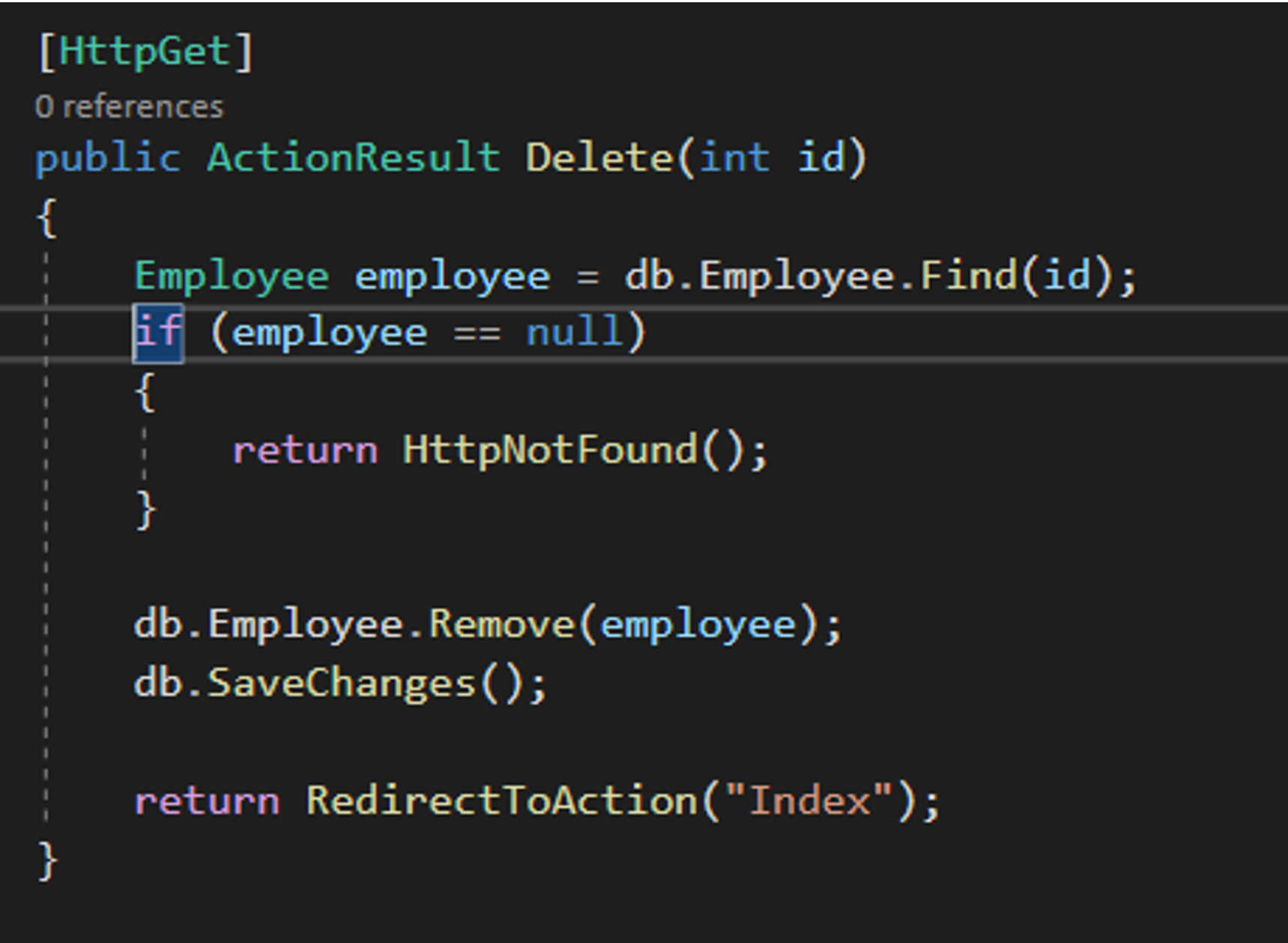
- We no longer add the employee object into the Entity Framework
ChangeTracker, which tracks the state of the employee entity. - We no longer use the
SaveChanges()method.
When using SaveChanges() to save changes to the database, we first need to set the state of the object we want to add, edit, or remove. For example, if we are deleting an object, we set the state of the object to Deleted by using the following code.
db.Employee.Remove(employee);
Next, to delete the object from the database, we will call the SaveChanges() method that will create a transaction, then execute a DELETE statement towards the database, and finally will commit the transaction. What DeleteFromQuery allows us to do is to get rid of the unnecessary roundtrips of adding the state of the object to ChangeTracker and instead does a direct query to the database. This approach makes sense when we deal with bulk inserts or deletes, mainly because SaveChanges() starts to break down after a couple of hundreds of items.
We are currently working with a database that has only a couple of items in it. Let's changed that and put both methods SaveChanges() and DeleteFromQuery() to a test. To fill the database with the necessary data, we will create a helper called DataHelper, and in it, we will define a method called SeedData. To do so, back in Visual Studio, right-click the project FirstMVCApplication and choose Add > New Folder. Name the folder Helpers. In the folder, add a static class called DataHelper.
The SeedData method in the DataHelper looks as follows.
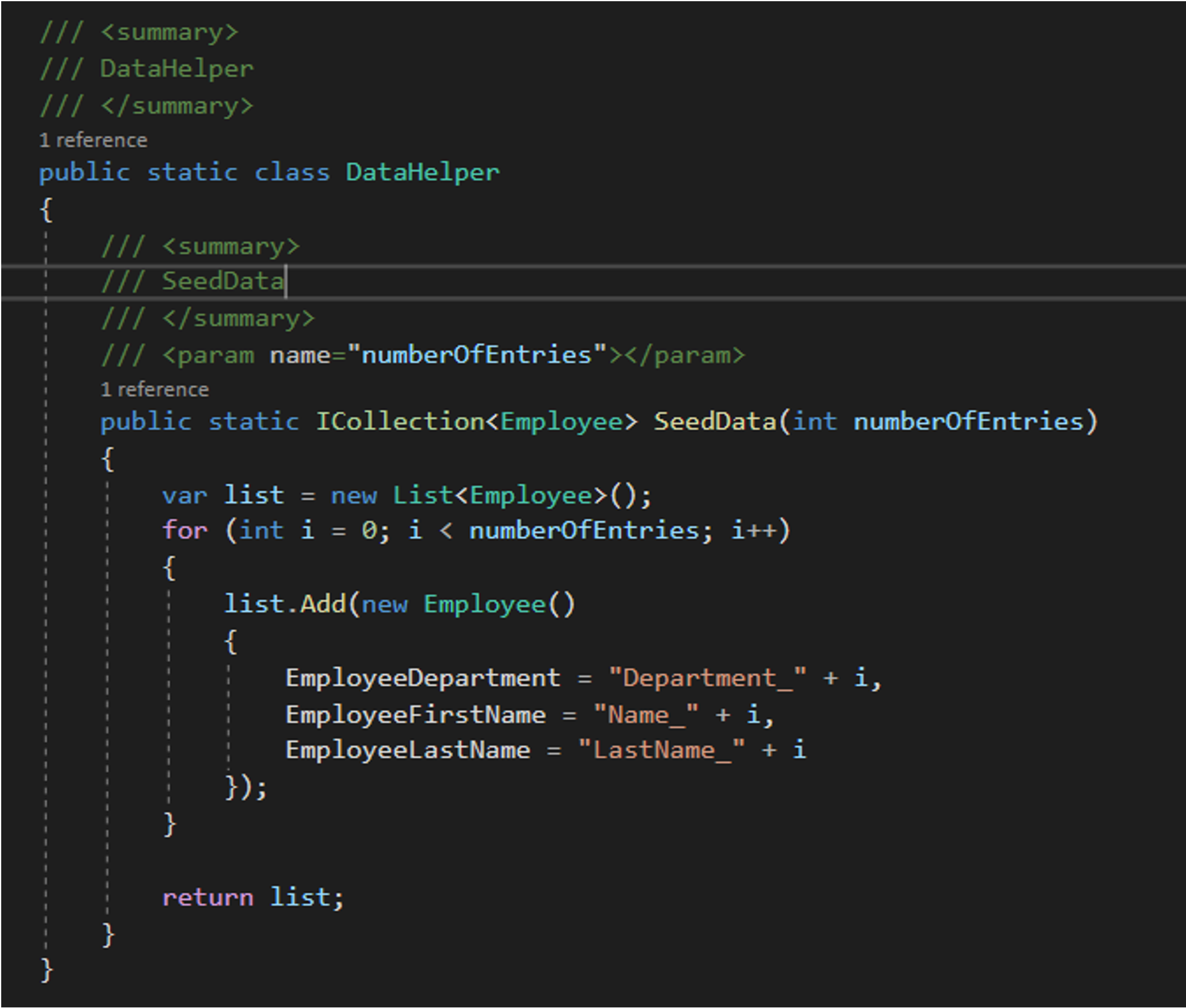
The method returns a list of employees, where the number of employees returned is equal to the numberOfEntries parameter.
To test the DeleteFromQuery extension method, we will add two new actions that are removing all employees from the database.
The first action will use SaveChanges(), and the second will use DeleteFromQuery(). We will also measure the time needed for both actions to do the deletion on the same number of users.
Back in Visual Studio, add the following action links at the beginning of the Index.cshtml view under the Employee folder.

The first action link will call the DeleteMultiple action, which is defined in the EmployeeController.
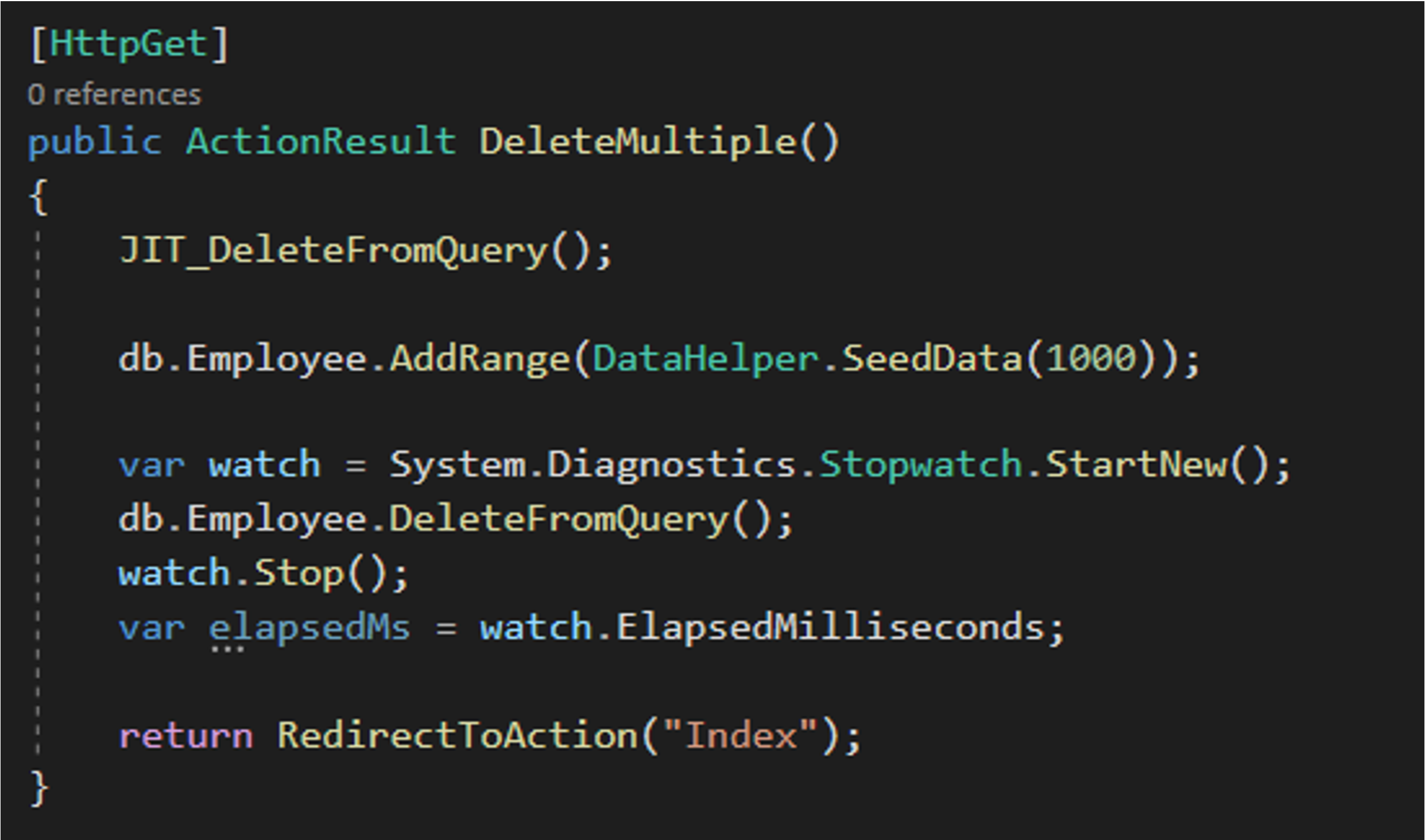
The second action link will call the DeleteMultipleSaveChanges action, which is also defined in the Employee controller.
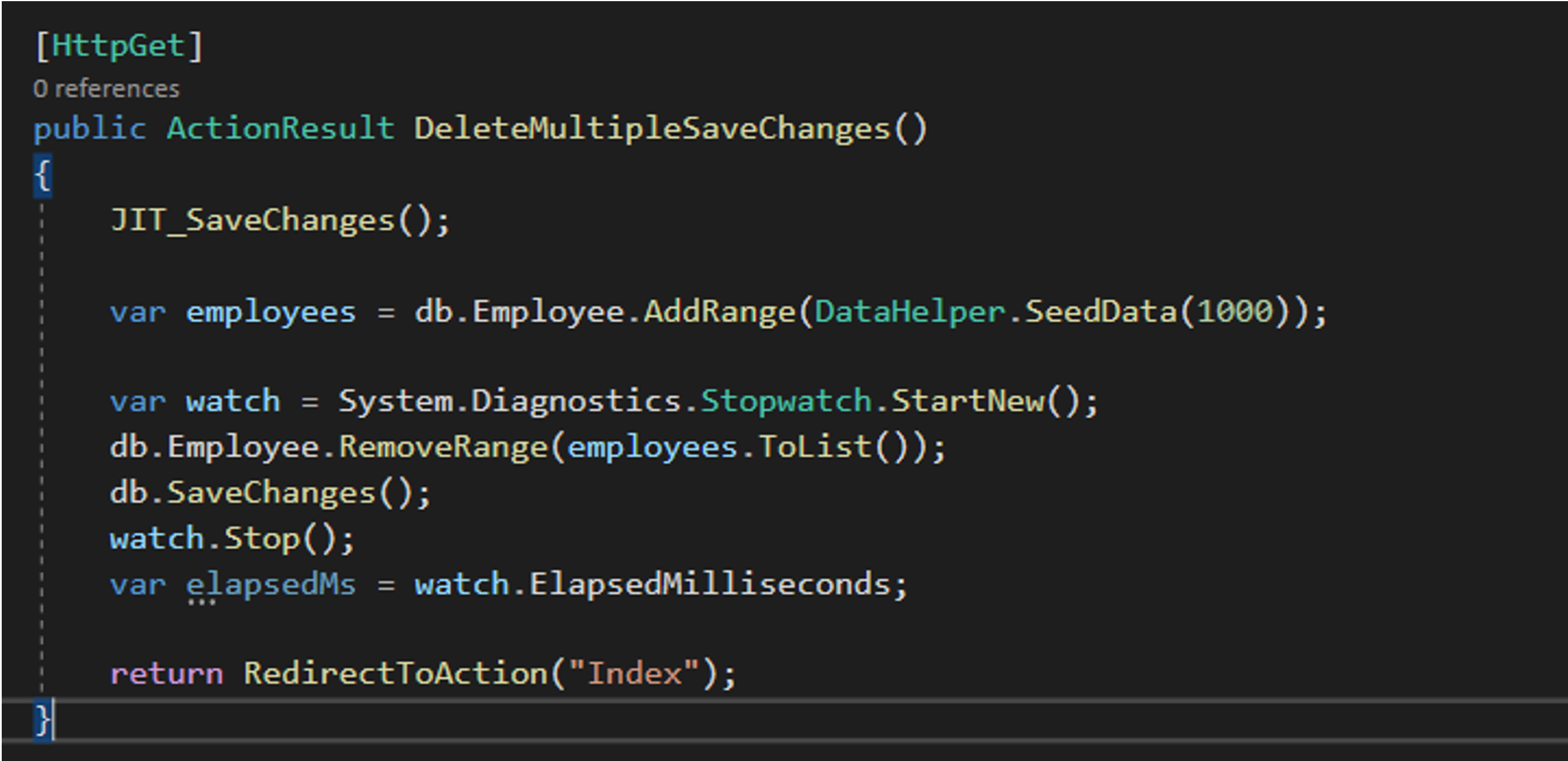
We watch the execution of the two actions by using System.Diagnostics.Stopwatch. We start the stopwatch at the beginning of each action and stop it when the delete operation is over.
If we run both actions on the same dataset, we can see that the DeleteFromQuery performs significantly better than the SaveChanges().
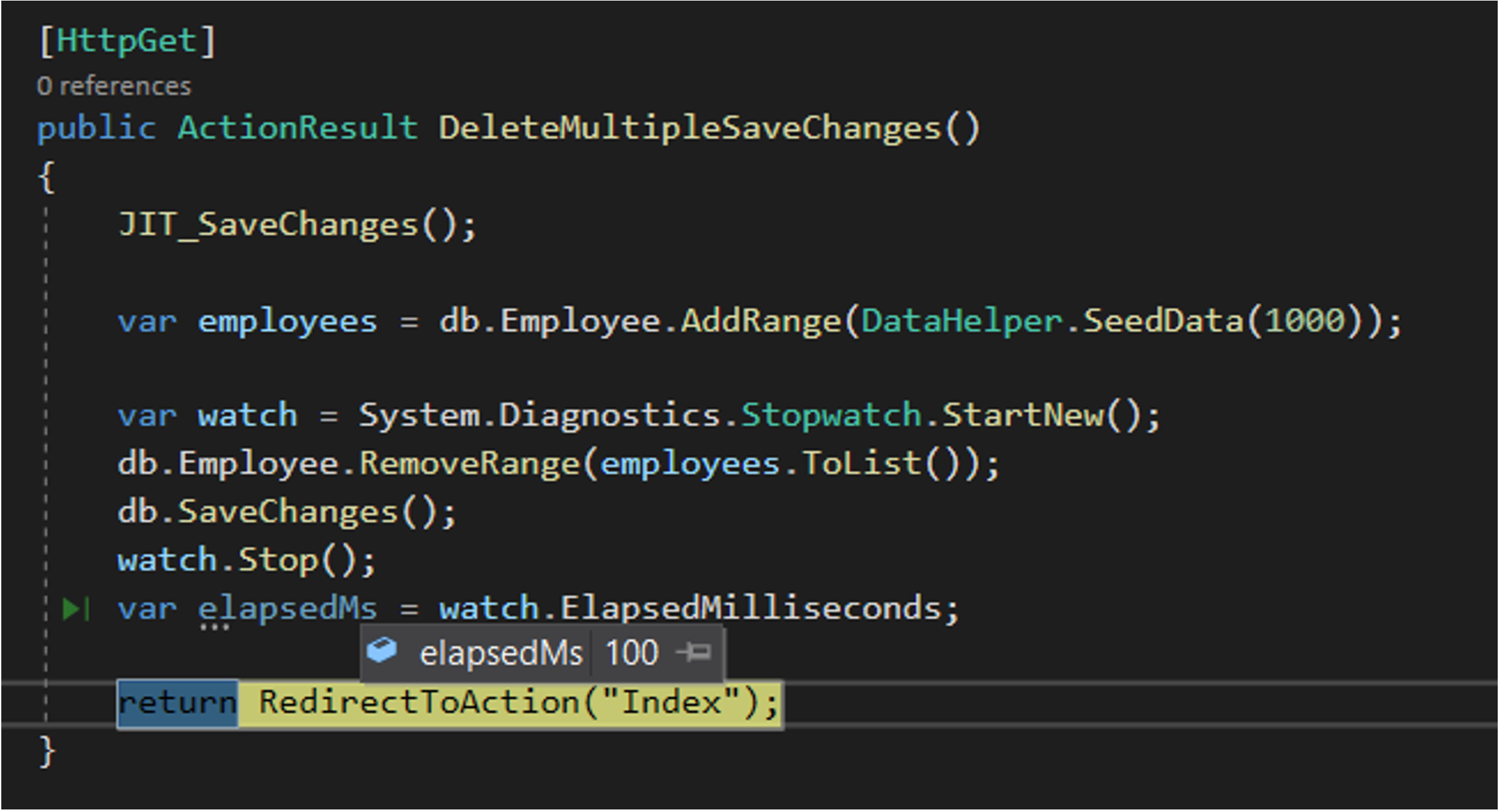
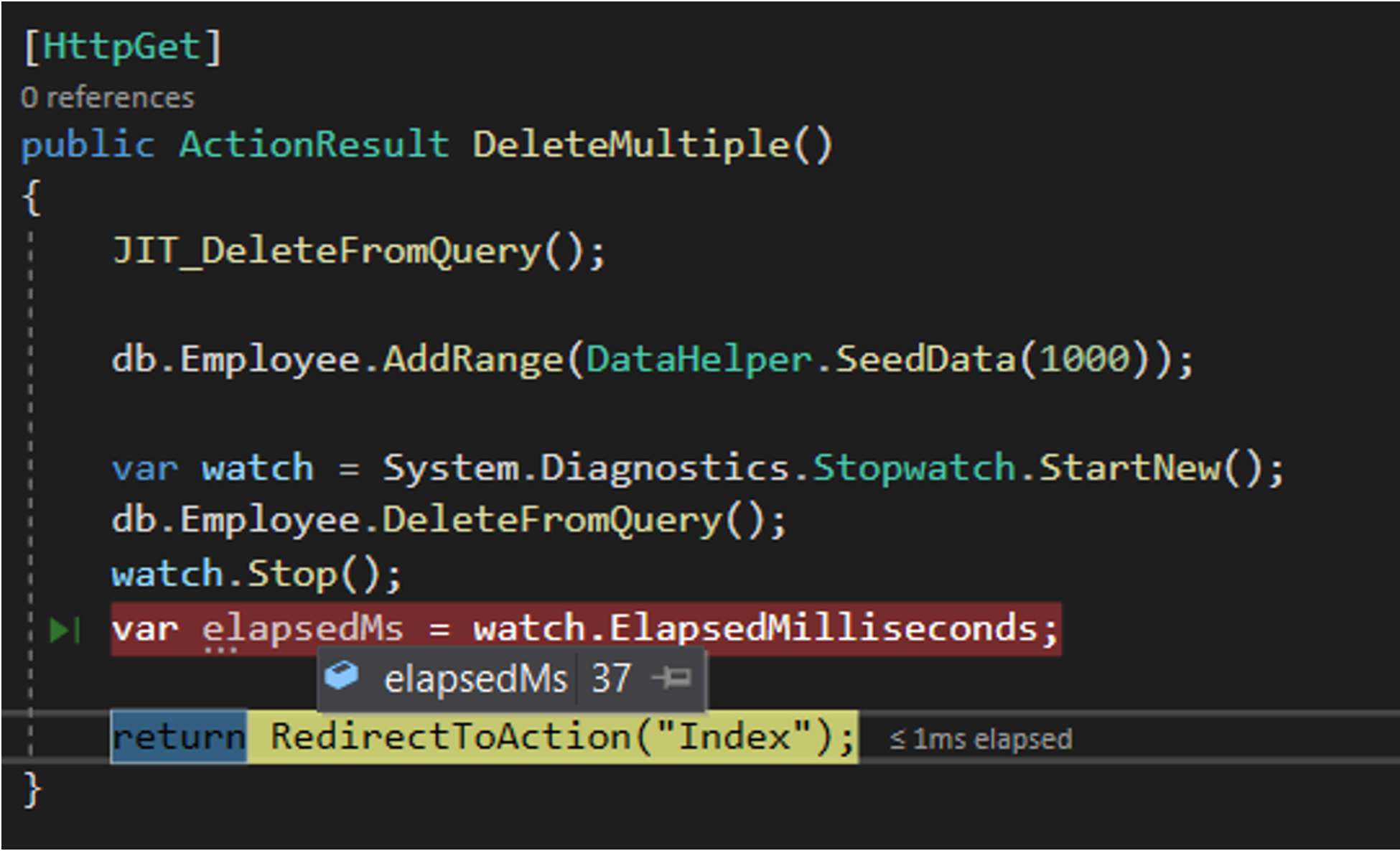
The DeleteMultiple method that uses the DeleteFromQuery extension method to remove all employees runs in 100ms, where's the DeleteMultipleSaveChanges method that uses SaveChanges() runs in 37ms.
You might ask what are the methods JIT_DeleteFromQuery() and JIT_SaveChanges() do?
The first time the extension method DeleteFromQuery() is called, there is a just in time compilation happening, which can take up to hundreds of ms. To make sure that we compare both methods properly, we call each of these two methods in advance to make sure that the JIT compilation is already done for both of them. The JIT methods look like this.
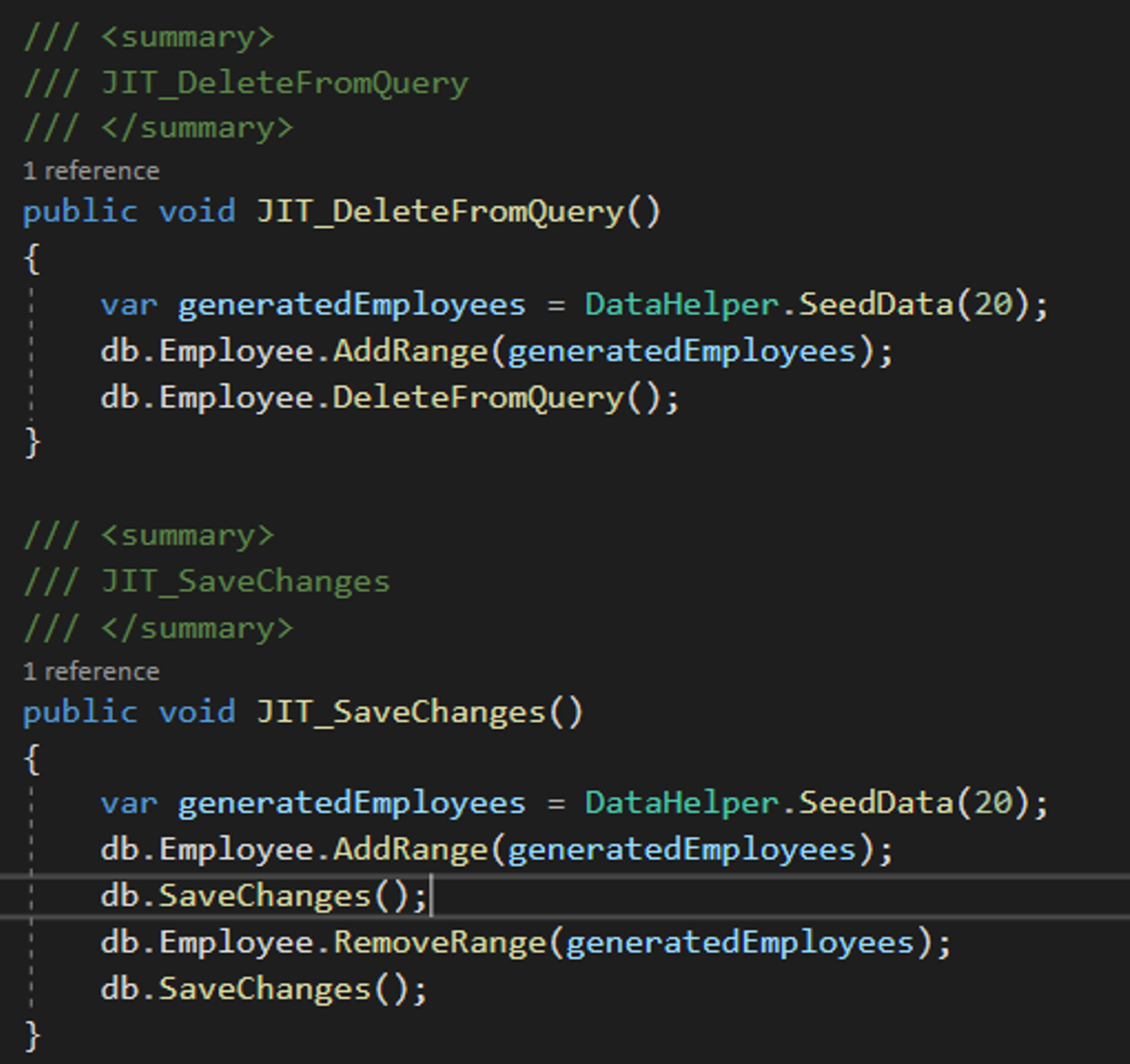
BulkSaveChanges
BulkSaveChanges is another extension method that we can use to get better performance when dealing with more massive data sets. BulkSaveChanges offers better performance when saving hundreds of entities in the database.
The difference between SaveChanges and BulkSaveChanges is that SaveChanges makes a roundtrip to the database for each entry we save, where the BulkSaveChanges makes a roundtrip for every 25 entries we save. Under the hood, both methods use the same SQL in the same order, but the number of SQL commands executed is smaller in the case of using BulkSaveChanges.
To test the BulkSaveChanges extension method, we will add another action link in the Index.cshtml view under the Employee folder. The action link is as follows.

The UpdateMultiple() method is another action method defined in the EmployeeController and given in the image below.
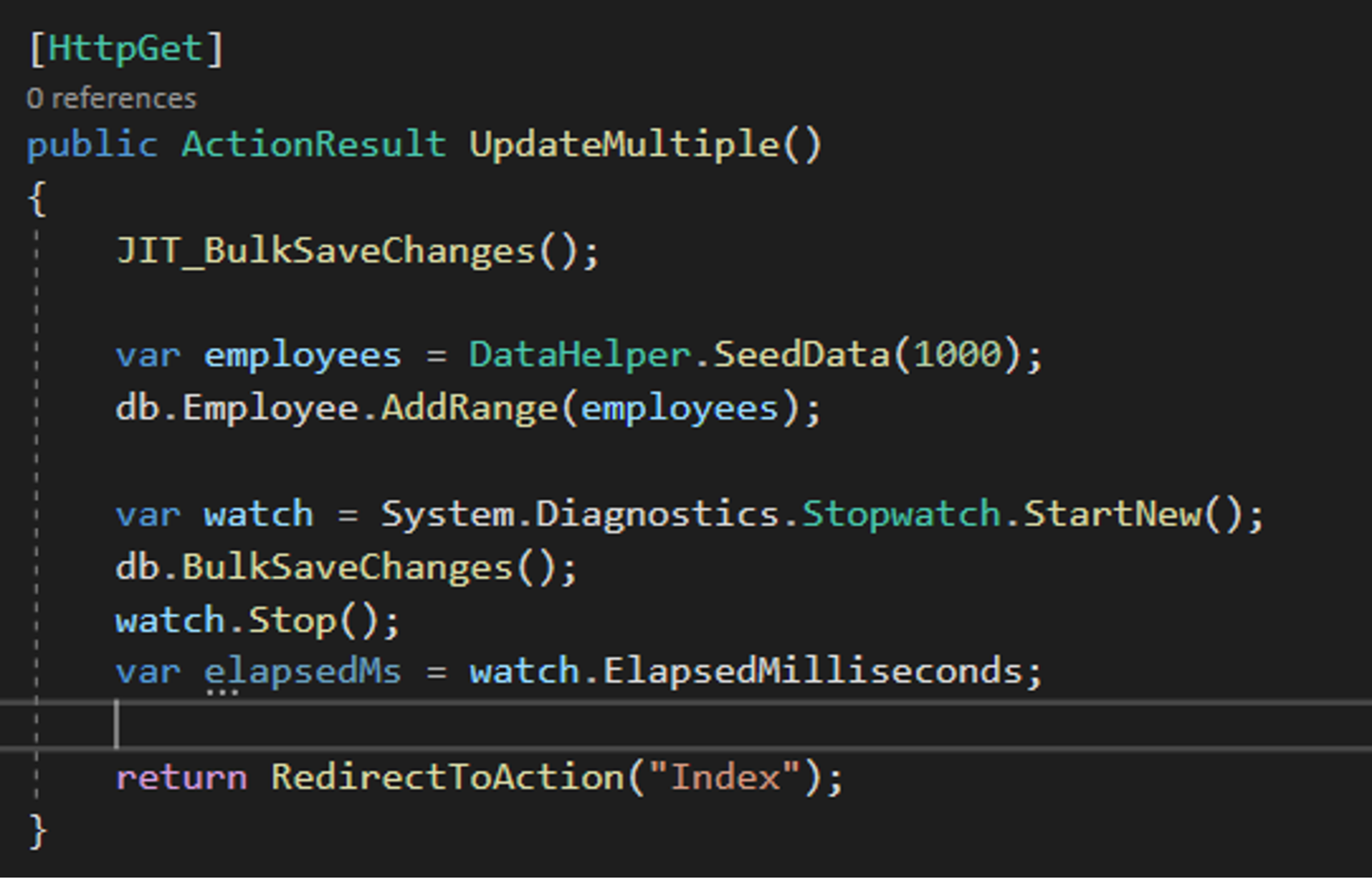
Again, we define a different JIT method in this case, JIT_ BulkSaveChanges(), to make sure that the JIT compilation is executed before we start measuring the execution of the BulkSaveChanges extension method. The JIT method is as follows.
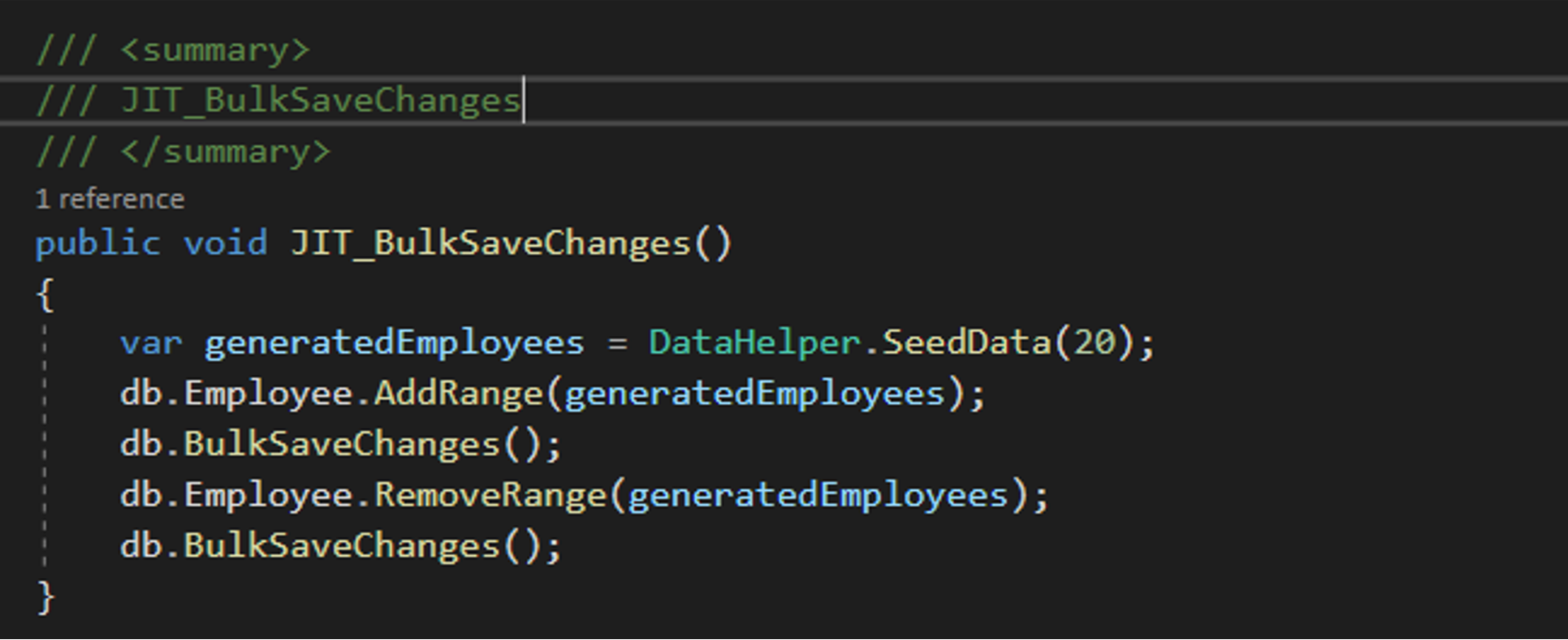
In the next image, we can see the results from the BulkSaveChanges() method when called on a data set of 1000 entries. One thousand entries are inserted in the database using the BulkSaveChanges() method in 490ms.
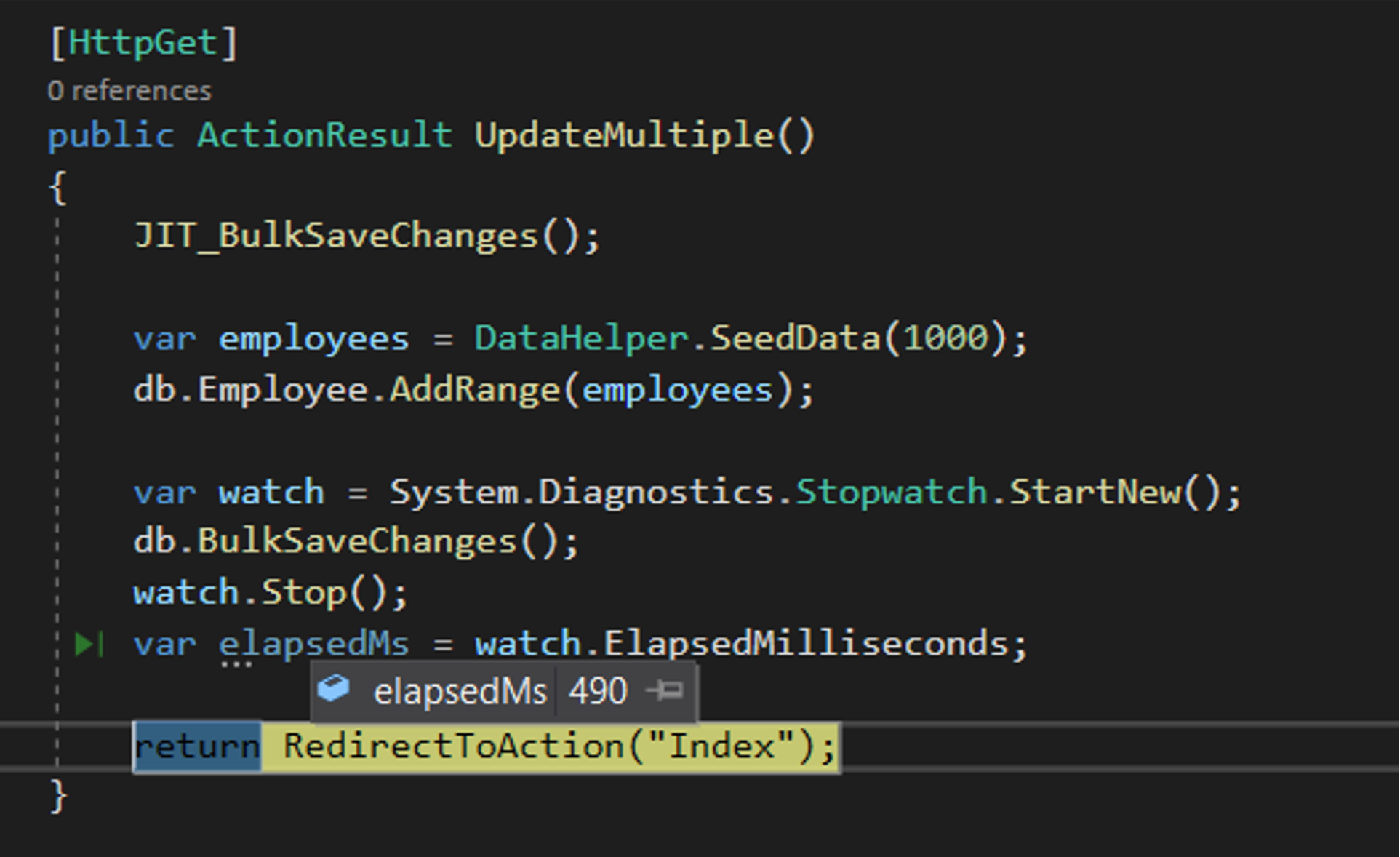
There is another extension method called BatchSaveChanges(), which is also used when updating entries. The usage of this method is the same as with the BulkSaveChanges(). The difference between these two methods is that BulkSaveChanges() is more scalable and offers different options that can make the method faster in different scenarios and, as a result, works better with larger data sets consisted of thousands of records.
